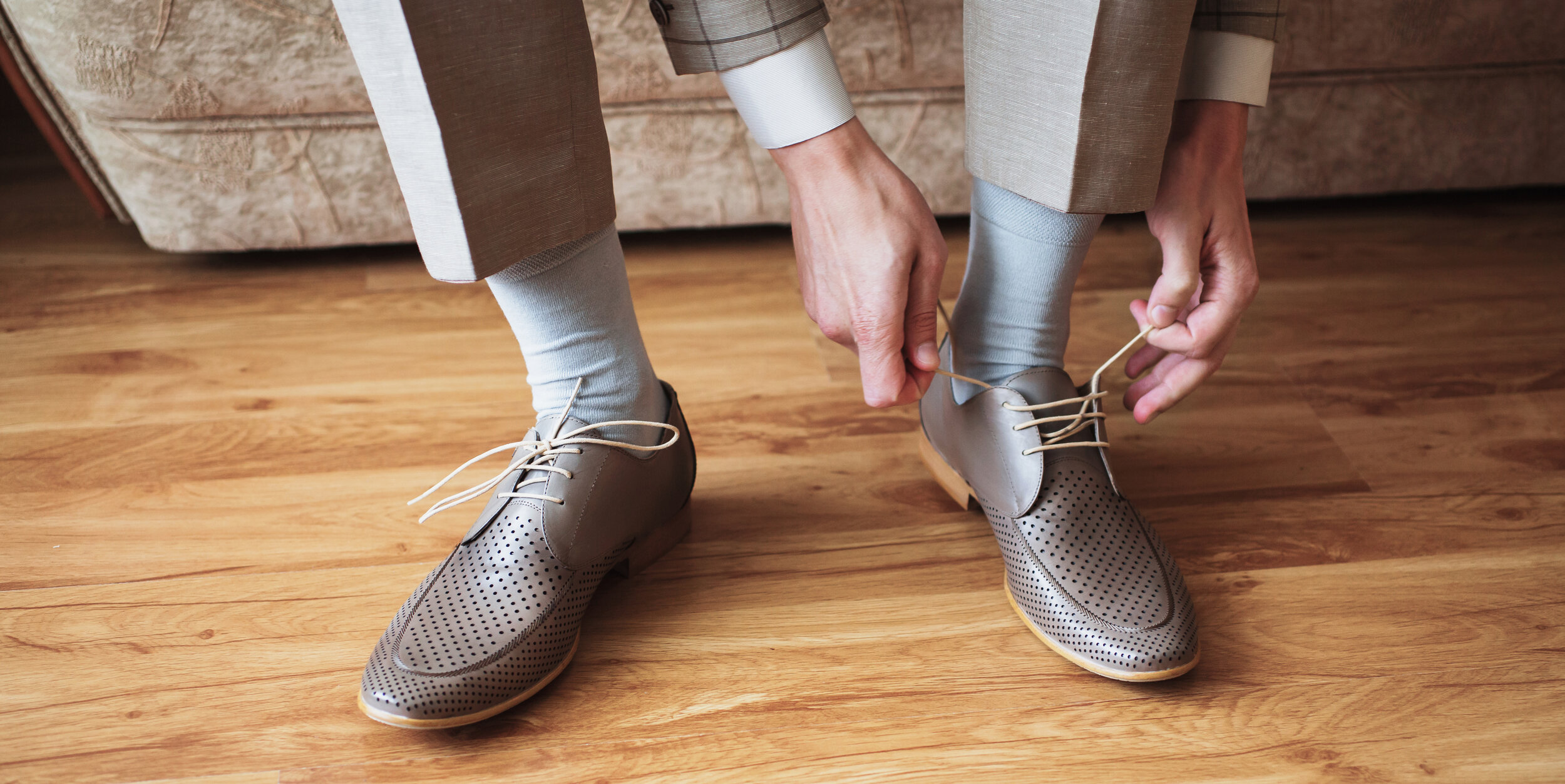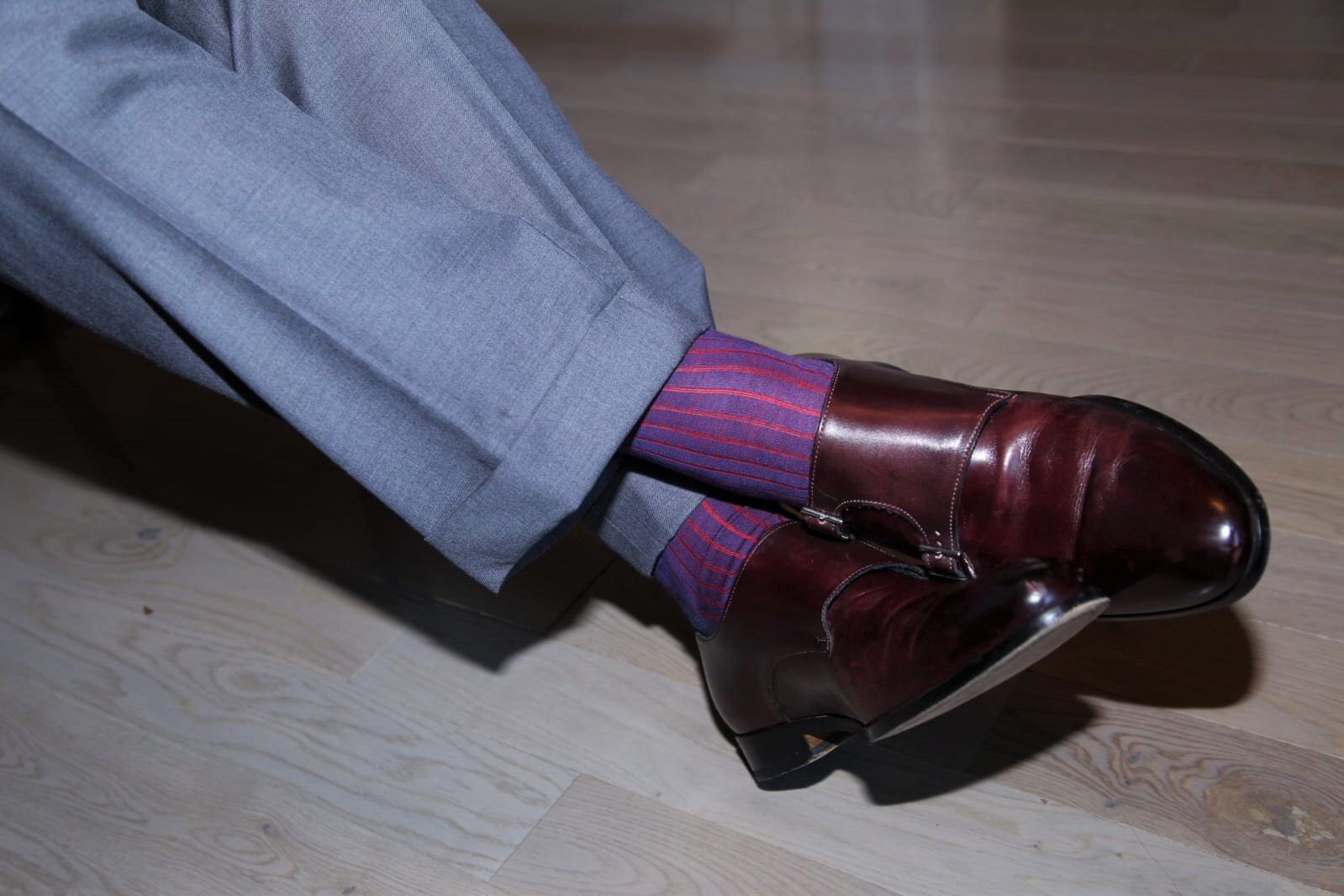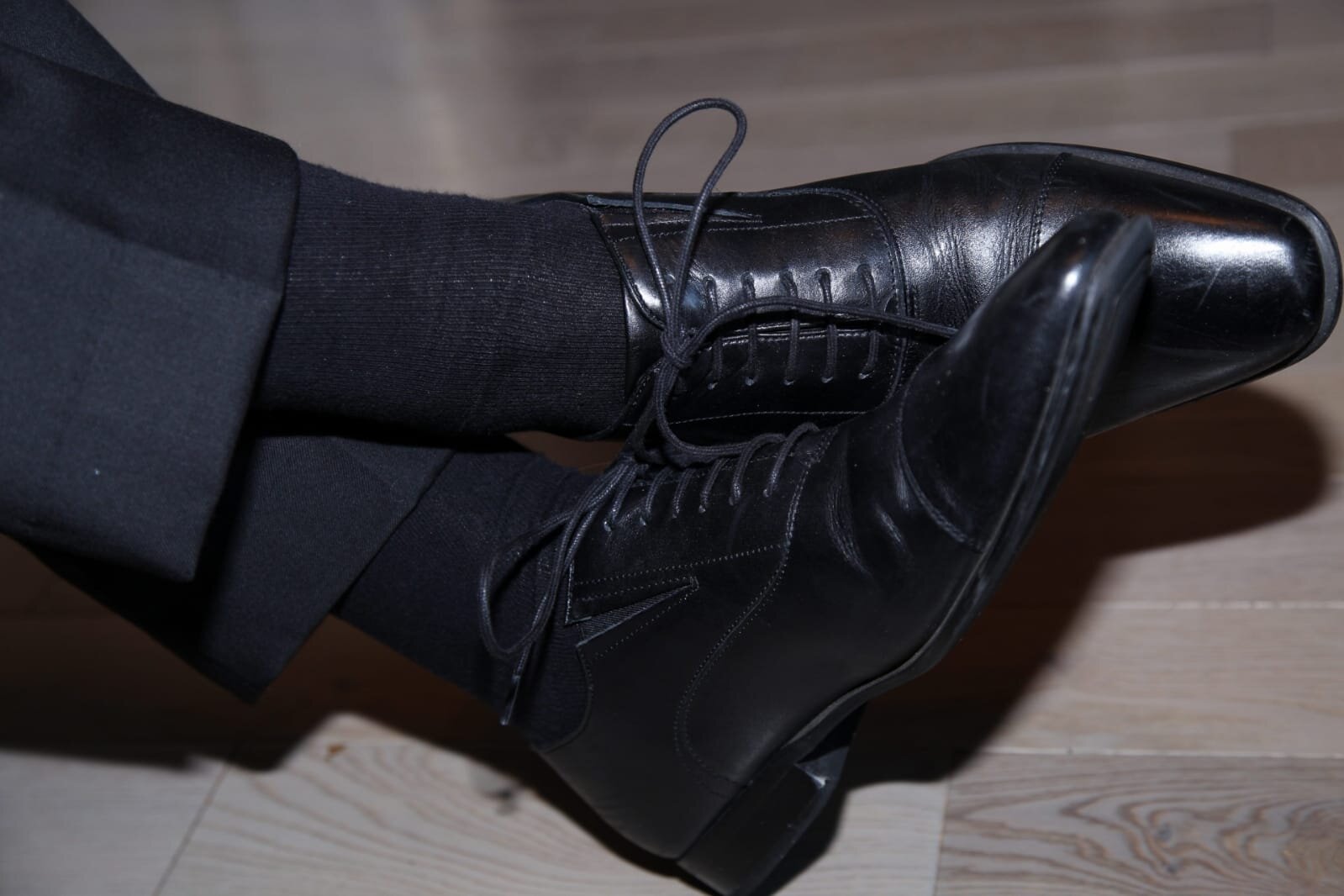Combining Socks with Pants and Shoes
An overlooked detail that can make or break your outfit.
Hello, friends.
Today’s topic was suggested to me by two of my fantastic co-workers, Sholi and Rachel (now you can pass the information on to your husband, Rachel!). Thank you guys for the suggestion! If you want to see yourself featured up here, then please leave your suggestions in the comment section below.
Now, on to the topic at hand!
When it comes to how we dress and present ourselves, the devil is in the details. If there is one aspect of your ensemble that isn’t harmonizing with the others, it can throw off the whole look. Even the smallest details shouldn’t be overlooked, and this is certainly true when it comes to choosing the right pair of socks for your outfit. Therefore, today I will be speaking about how to combine socks with pants and shoes so that you can create thoughtful, cohesive ensembles that make you stand out in the best ways.
As a general rule, you should match your socks to your pants, not your shoes. This is a common style mistake that many people make. The theory behind this is that by matching your socks to your pants, you create the illusion of a longer leg line, which looks quite pleasing. On the other hand, matching your socks to your shoes can often make it look like you’re wearing boots.
Before we get into some more rules and advice, let’s speak about some don’ts.
1. Please do not wear white tennis socks unless you’re going to the gym. In most cases, it looks awful and downright off when you combine white socks with any form of casual or formal wear. Case in point:
White socks with black derby shoes
2. Don’t wear mid-calf socks. This rule can also be demonstrated by the picture above. Mid-calf socks usually aren’t the best option, as they can often slip down, puddling around your ankles and exposing your calves. This is not an advantageous look.
3. A few years ago, there was a trend of so-called “crazy socks,” that had wild colors and patterns. Super bold patterns and colors and other “whimsical” designs should be avoided, as they can look quite childish and detract attention from the rest of your outfit.
A pair of “crazy socks,” one with bright polka dots and the other in bright orange with rabbits
4. Don’t match solid socks to solid pants that are nearly the same color. Since the match is not perfect, it will make the combination look visually off and confusing. Instead, if you want to stay within one color family, ensure that the colors you choose are clearly distinct.
Tan pants with tan socks and shoes
In the picture above, the socks and pants are very close in color, but yet, they aren’t identical. As I stated in my post about the first suit you should buy, using two shades that look nearly identical almost always looks worse than an obvious contrast.
Now that we know what we shouldn’t do, we can discuss how to combine our socks, pants, and shoes with style.
First, it’s crucial that you choose the right pair of socks. Although it may seem a bit out of the ordinary, I highly recommend that you look into a pair of over the calf socks. I think we’ve all experienced the frustration of having to pull up our socks constantly during the day, which can be alleviated by wearing socks that go over the calf. I started wearing over the calf socks about a year ago, and I will never go back to mid-calf socks, as they stay up all day, eliminating my frustration and never exposing my calves.
I own two pairs of over the calf socks from Fort Belvedere, and they’re absolutely incredible. However, at $40 a pair, they’re quite expensive. You can get the socks for free if your order value is over $100, which is what I did. Jon from The Kavalier did a roundup on YouTube about his favorite over the calf socks at various price points, so definitely check it out if you’re looking for something more affordable.
Another option is to go with no-show socks, although you need to ensure that you’re wearing the right kind of outfit for that look. For example, if you’re wearing shorts and a polo shirt, I would wear a pair of no show socks and casual sneakers/boat shoes, as this creates a nice, clean look.
Finally, we can now move on to some rules and general advice so you can be confident that you’re putting together thoughtful, cohesive ensembles. Once you have an understanding of these general guidelines, you will (hopefully) be able to match your socks, pants, and shoes with confidence and not have to worry about whether one element does or does not meld with the others.
1. If you’re going to be wearing solid pants with solid socks, make sure that you have a strong contrast with the colors, as demonstrated below:
Dark brown pants with tan dress socks and brown oxford shoes
Although the socks and pants are both within the same color family (brown), the strong contrast between the dark brown pants and the light brown socks creates a great look.
2. Use socks that have more than one tone in them. This will make it easy for you to combine them with a wide variety of pants. For example, if you have a pair of blue and gray striped socks, you can easily pair the socks with anything blue or gray, no matter what shade they are in.
Take the socks in the picture above, for example. They’re made up of navy blue and red, which creates a tertiary, purple color. Having the navy blue in the socks means I can pair them with any shade of blue, such as with this pair of dark wash jeans. I happen to be wearing them in a more casual ensemble, with jeans and monkstraps, but they can just as easily be worn with a navy blue suit and some black oxfords for a more formal look. Additionally, they can also be worn with pants that are in any shade of red, and they will look fantastic.
3. Don’t be afraid to match patterned pants with patterned socks! There appears to be a misconception that you can’t wear socks and pants together if they both have patterns. While there’s certainly nothing wrong with wearing patterned pants with solid socks, there’s no reason why you can’t wear them with patterned socks as well. The only case where I would discourage you from wearing patterned socks and pants together would be if the size and type of pattern are identical, such as wearing pinstripe pants and striped socks where the size of the stripes is the same.
Navy, pin dot chinos, blue and navy diamond patterned socks, and brown, suede chukka boots from Meermin
In the picture above, both the socks and the pants I’m wearing have patterns, but the look is still cohesive since the socks are in a diamond pattern and the pants use a small, pin dot pattern. (It goes without saying that another reason it’s a good look is that both the pants and socks are in the blue color family.)
4. In addition to matching your socks to your pants, you can also match them to your shirt, your jacket, or one of your accessories, although this is more advanced.
Gray dress pants, navy blue and red shadow striped socks from Fort Belvedere, and diablo monkstrap shoes from Ace Marks
Though you obviously can’t tell from the picture above, with that outfit, I was wearing a burgundy tie and a navy blue blazer, both of which were picked up by the colors in my socks.
5. This last rule is very specific, but since so many men wear black suits and black shoes, I figured it would be best to mention that the only socks that I see as appropriate with this ensemble are black ones. This is because black only comes in one shade and having different colored socks in the middle separating the shoes and pants can look quite jarring.
Black dress pants, black socks, and black, oxford, cap toe shoes
Before you frantically jump in and say, “Wait, the shoes, you forgot about the shoes!” I say, don’t worry. As I mentioned at the beginning of the article, your primary concern is matching the socks with the pants, not with the shoes. In terms of which shoes to wear, you generally want to pick ones that will match with the formality and colors of the rest of the outfit. I will have a separate article where I discuss which pairs of shoes are most appropriate for different outfits, as that is a topic beyond the scope of this post.
If you don’t know what I mean by “match the formality,” and you can’t wait for the next article, feel free to ask in the comments, and I’ll be glad to help you out.
Well, there you have it! Hopefully now, you have a better understanding of this somewhat intricate topic. If you have any questions or a suggestion for next week’s topic, please leave them in the comments below (it’s right there, at the bottom. All you have to do is put in your first name and select “Continue as guest.” It’s super easy.)! If you know of anyone who would like these posts, please feel free to share it with them! Any help is greatly appreciated and super beneficial!
Farewell for now.









